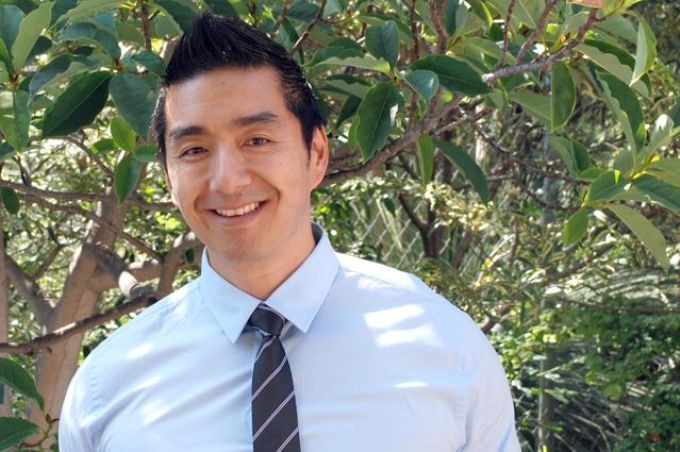Oct 24 2017
Root canal treatment may soon be more effective because of a miniature but powerful ally that could inhibit infection after treatment.
 UCLA professor Dean Ho is one of the world’s leading experts on the use of nanodiamonds in medical applications. (Credit: Brian Lozano/UCLA Dentistry)
UCLA professor Dean Ho is one of the world’s leading experts on the use of nanodiamonds in medical applications. (Credit: Brian Lozano/UCLA Dentistry)
A team of Researchers at the UCLA School of Dentistry and the UCLA Henry Samueli School of Engineering and Applied Science discovered in a clinical trial that nanodiamonds protected disinfected root canals after the nerve and pulp were removed, thus enhancing the probability of a complete recovery. These findings are a breakthrough for the application of nanodiamonds in humans.
Nanodiamonds are miniature particles composed of carbon and are so tiny that millions of them could be placed on the head of a pin. They look like soccer balls but have facets like real diamonds. Those facets enable the nanodiamonds to deliver a broad range of drugs and imaging agents.
In a paper published on October 23rd in Proceedings of the National Academy of Sciences, the UCLA team states that integrating nanodiamonds with gutta percha, a material used to fill disinfected root canals, may improve the gutta percha’s protective properties.
Harnessing the unique properties of nanodiamonds in the clinic may help scientists, doctors and dentists overcome key challenges that confront several areas of health care, including improving lesion healing in oral health.
Dean Ho, Professor of Oral biology and Medicine, The Dental School, UCLA and a Co-corresponding Author of the study
Shielding disinfected root canals is a delicate process. Dentists use gutta percha to obstruct bacteria from penetrating the tooth, but it can break during the procedure or develop pockets of space for bacteria to enter, which results in infection.
The Researchers tried out nanodiamond-embedded gutta percha (NDGP) in three people who were undergoing root canal treatments. Tests of the implanted material established that the NDGP was more resistant to collapsing and breaking than conventional gutta percha.
All three patients healed well, without infection and without unusual pain.
This trial confirms the immense promise of using nanodiamonds to overcome barriers for a range of procedures, from particularly challenging endodontics cases to orthopedics, tissue engineering, and others.
Dr. Mo Kang, Jack Weichman Professor of Endodontics, Dentistry, UCLA and Co-corresponding Author
Using NDGP for the procedures did not need modifications to any of the standard procedures for root canals, said Dr. Eric Sung, the Paper’s Co-corresponding Author and a UCLA Professor of Clinical Dentistry and the United Cerebral Palsy of Los Angeles Professor of Special Patient Care.
Ho, one of the world’s prominent Researchers on the medical use of nanodiamonds, has partnered with Cancer Biologists, Oncologists, Materials Scientists, Chemists, Mechanical Engineers and others over the last decade to investigate how nanodiamonds could be applied in cancer treatment, regenerative medicine, oral health and antimicrobial applications, among other areas.
“We believe nanodiamonds could ultimately help us sidestep drug resistance in cancer, improve the efficiency of magnetic resonance imaging and address other clinical challenges,” said Ho, who also is a Professor of Bioengineering, Co-director of the Jane and Jerry Weintraub Center for Reconstructive Biotechnology, and a member of the UCLA Jonsson Comprehensive Cancer Center and the California NanoSystems Institute at UCLA.
Other Authors of the study are Co-first Authors Dong-Keun Lee, Theodore Kee and Zhangrui Liang; Desiree Hsiou, Darron Miya and Brian Wu of UCLA Dentistry; Eiji Osawa of Japan’s NanoCarbon Research Institute; and Edward Chow of the National University of Singapore.
The research received support from the National Cancer Institute, the National Science Foundation, the Wallace H. Coulter Foundation, the V Foundation for Cancer Research, a Society for Laboratory Automation and Screening Endowed Fellowship, Beckman Coulter Life Sciences and the National Research Foundation of Singapore.